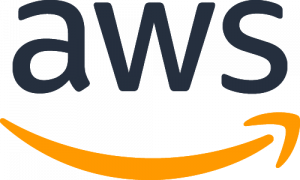State and local governments have it tough. With resources more limited than their federal counterparts, officials have the same impetus for modernization but less room for error.
This formed the topic at hand for the recent DorobekINSIDER LIVE, “Exploring State and Local Challenges,” which joined thought leaders from both the public and private sector. Craig Orgeron, Executive Director of Mississippi’s Information Services Department and the state’s CIO, and Jamie Butler, Senior Manager of Solutions Architecture at Amazon Web Services, spent most of the hourlong training trading best practices and what they view as the most prominent challenges.
Hannah Moss, GovLoop’s Senior Manager of Production, opened the session by discussing her findings in a recent guide she authored, called “State and Local Technology: What You Need to Know.” The guide shed light on a handful of case studies from across the country — many with unique and nuanced approaches to modernization.
“That’s what I’d love for people to get from this guide: there are multiple ways to skin a cat,” Moss said. “You can really see that in state and local governments, and the way they’re innovating today.”
Orgeron brought firsthand experience of how Mississippi has approached IT modernization over the last few years. For example, the state implemented a chatbot named Missi, which can support about 1,000 iterations of questions on topics ranging from taxes to driver’s licensure. But that’s not to say innovation has been easy for him and his team.
“The modernizing process has been a significant challenge,” Orgeron said. “That comes from investment. How do you govern the enterprise, how do you make the smartest investments with the resources you have, to move a state enterprise — that’s made up of many different agencies — forward?”
In the case of Mississippi, the answer has come by way of conversation. Orgeron cited the importance of communication for making the most of state and local modernization budgets.
Toward that line of thinking, the state has assembled a cloud council consisting of members from various agencies, Orgeron said, with a goal to “figure out a way to make investments … that would help us move in the same direction.”
At the forefront of most discussions on government IT modernization is cybersecurity. After all, there’s no point in updating a system if that update only opens up more vulnerabilities. That focus on security has served companies like AWS, which provides cloud computing throughout government, very well.
“We believe that security really is job zero, it’s table stakes,” Butler said. “We have to start with security in place, and then everything else goes from there. We’re finding that a lot of people choose the cloud because it helps them be more secure than they could be on-prem. Largely, that’s due to the visibility that you gain within your applications.”
He expanded on the idea that IT innovation projects are better-executed and ultimately more useful when project teams keep users in mind.
“In state and local government, I think modernization is done best when it’s really customer-driven, and customers know their workloads best,” Butler said. “We typically find that they’re restless, that they want something better. Governance is no different, right? Our customers tell us that they increasingly want modern, scalable governance frameworks that help them meet the growing demands of their resources. We’re always happy to help provide them when we can.”






Leave a Reply
You must be logged in to post a comment.